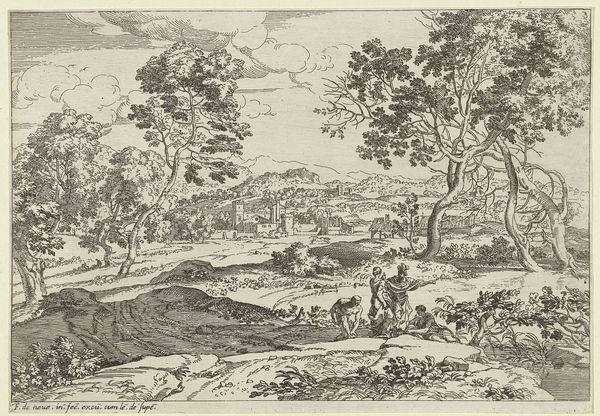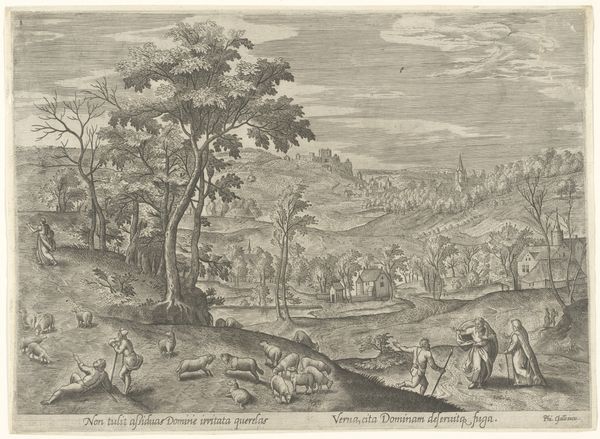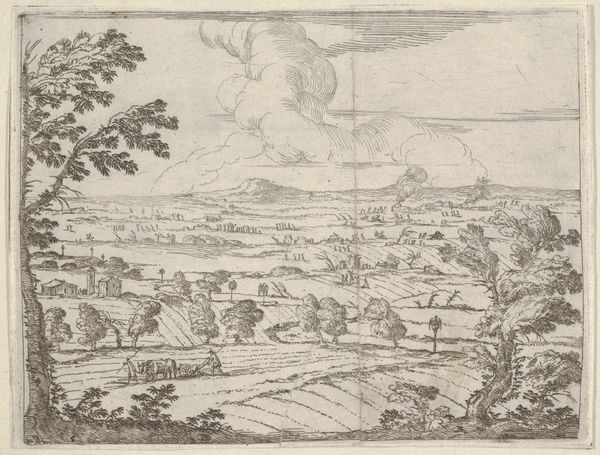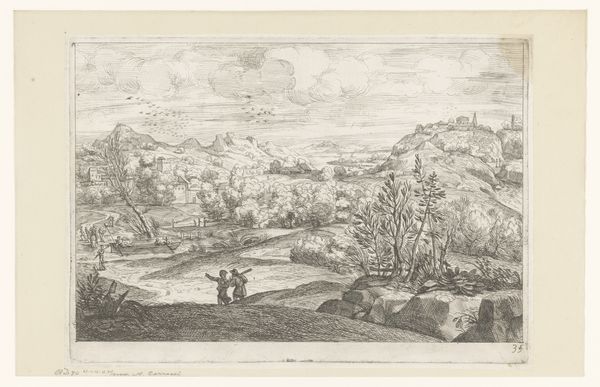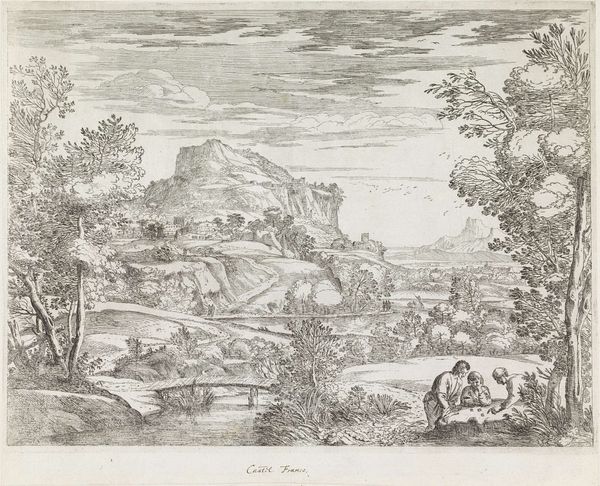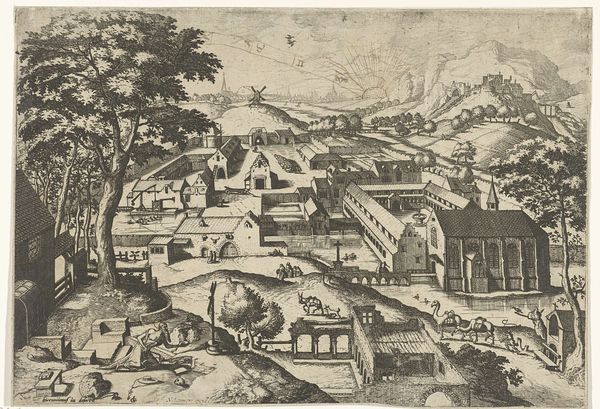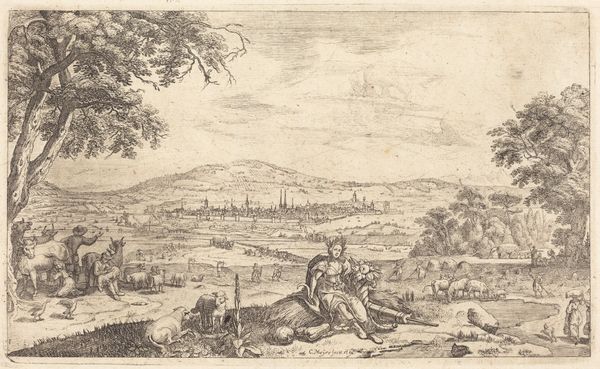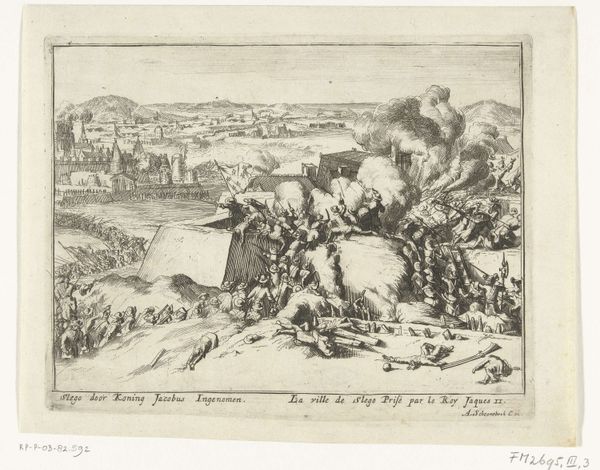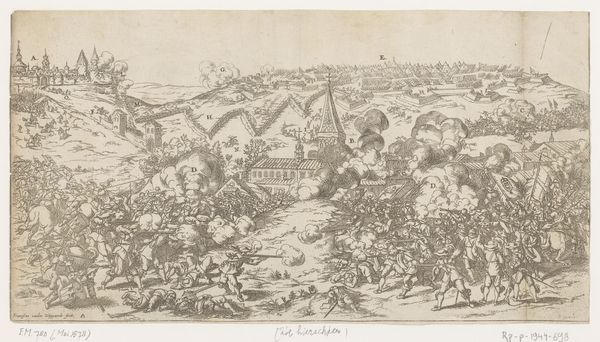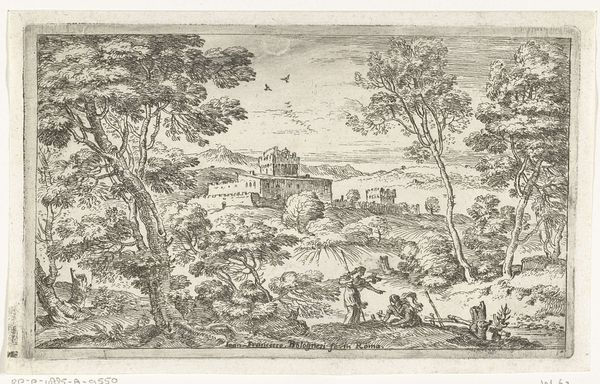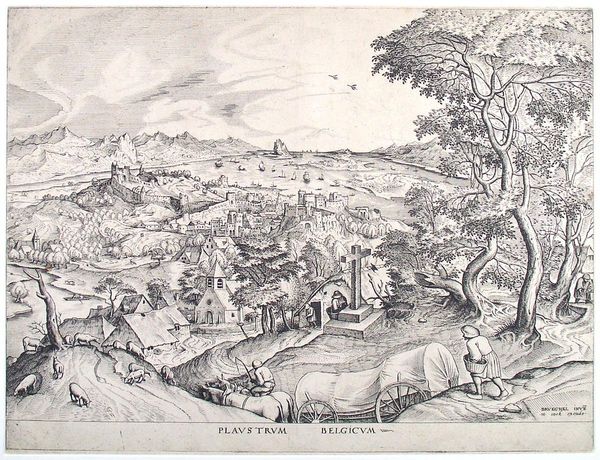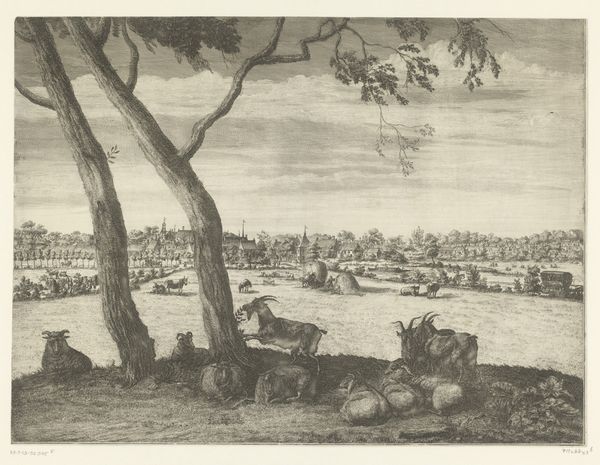
print, engraving
# print
#
pen sketch
#
pencil sketch
#
landscape
#
cityscape
#
genre-painting
#
northern-renaissance
#
engraving
Dimensions: height 322 mm, width 429 mm
Copyright: Rijks Museum: Open Domain
Curator: Ah, here we are standing before "Landscape with the Belgian Wagon," a print created between 1553 and 1558 by Johannes or Lucas van Doetechum, after Pieter Bruegel the Elder. It’s an engraving that just hums with detail. Editor: My immediate impression is one of bustling life nestled within a vast, somewhat idealized, world. There's a beautiful tension between the serene, panoramic landscape and the frantic energy of the figures scattered throughout. It’s like a slice of life, served on a platter of grand vista. Curator: Absolutely. The landscape is sweeping, showing a panoramic view, possibly an imagined or composite cityscape, which would have been appealing to urban audiences eager to imagine a connection between the rural and the urban. It's part of a series, actually, aiming to visually survey the "world landscape". It's all very meticulously rendered, isn't it? You can practically smell the earth. Editor: You’re right, there's something inherently dramatic about that contrast, playing the vastness of the world against the intimacy of daily routines. I can feel the rhythm of pre-industrial life; someone’s mending a wagon, sheep are wandering…and yet, it also feels imbued with a sense of ephemerality. Almost like looking at a freeze-frame in a grand play. What strikes me, really, is how deliberately the society is integrated with its natural surroundings. It’s no accident, is it? Curator: Definitely not. Prints like this served not just as aesthetic objects but also as instruments for crafting social identity. This engraving allows viewers, particularly those within the emerging bourgeois class, to contemplate their relationship to both the countryside and growing urban centers, shaping and broadcasting certain values that favored ideas of productivity. These prints often reflect particular values regarding labor, landscape, and national identity. Editor: Fascinating! Knowing that shifts my perception even further. It reminds me that every stroke, every carefully etched line, plays a part in conveying an ideal. Perhaps what seemed simply "picturesque" carries a deliberate political charge. All of those peaceful workers in nature almost make me feel anxious—it feels a little like propaganda! Curator: Well, isn’t all art propaganda to some degree? It's fascinating how a seemingly bucolic scene can be so layered with cultural and historical complexities. I always discover something new each time I really look. Editor: It makes you wonder about the unseen hands that shape our perceptions, doesn't it? Next time I'm buying a print, I might ask myself: "What vision of the world is this selling me?"
Comments
No comments
Be the first to comment and join the conversation on the ultimate creative platform.
